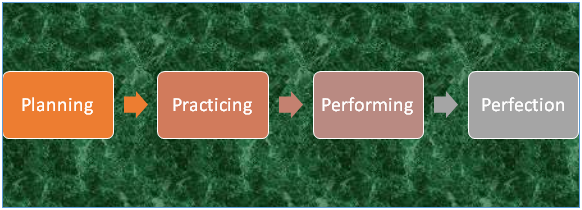SAP BASIS is often used by developers and designers for creating a bridge between the advanced business application programming; ABAP in short; and OS or the computer operating software. It works as the middleware between the two components. Some people tend to confuse the ABAP with the SAP BASIS but there are fundamental differences between the two.
Difference between SAP BASIS and ABAP
Basically, the R/2 systems are mainframe based. However, SAP invented the process of transporting the same to their client-server environment. In order to achieve this objective, they created the SAP BASIS application. It enables the ABAP/4 code on different platforms which the app did not have the capability to do originally. Usually, the ABAP/4 programs cannot directly run on one of the operating systems like Linux or Windows etc. It needs a number of programs to do so. These collections of programs are known as the BASIS without which the ABAP/4 programs cannot run on any operating system.
Installing SAP BASIS
For installing the SAP BASIS, the installer has to run a program called the “r3inst” at command prompt level of the operating system on which it is used. It creates one of the directory structures and copies the set of executables into it. For example; the directory structure for the Windows operating system may consist of program files, windows, and it will copy sets of executables into the directory. The core feature of the system is that the ABAP/4 programs run effectively with the protective environment offered by the BASIS structure. Executables created and stored in the system are not the ones that would run on the operating system. Instead, they would run on the system when the BASIS would read the ABAP/4 code and would interpret it.

Understanding SAP BASIS
SAP BASIS replicates the operating system and provides a platform for the SAP applications running. It helps use the entire range of SAP applications. It is necessary understanding the differences between developer trace, system log and the system traces.
- System trace is used to record internal SAP system activities and for diagnosing the internal problems with SAP system and host system
- System log is used to identify the recent logs for application server and CI
- Developer trace is used to record technical information about as well as errors and problems that are encountered. Its basic purpose is problem analysis
Analyzing Problems in SAP BASIS
Like every other application and platform, it is necessary analyzing the problems in SAP BASIS.For such problem analysis, it would be necessary –
- Checking the latest status of the database
- Analyzing the implementation and problems relating to SAP services
- Checking effectively the SAP management console including the dispatcher, IGS as well as the Message Server
- Finding out the trace root on the basis points at the SAP based applications and the database
- Checking for the network connectivity and resolving the related problems
Private Mode and OSPS
There are certain terminologies that require the attention of the end users in case of SAP BASIS. For instance; private mode refers to the method where the heap data is allocated by the user in an exclusive way. There are not shared across the available systems. It usually happens when the extended memory is exhausted. Similarly; two users are created in the SAP systems that are known as the OPSS ADM and the OPSS SAP services in the process. They are created in order to connect and communicate with the database internally. They are user mechanisms for connecting with user databases internally.
RFC and Transactional RFC
It is also expedient understanding the differences between RFC and Transactional RFC. The Remote Function Cell or RFC is the mechanism that helps communication as well as exchanges information between different SAP systems. RFC can be synchronous, asynchronous, transactional and queued. Transactional RFC is the one when multiple requests for the same transaction is identified and carried out as one.
In this manner, the SAP BASIS works as the bridge between the ABAP and OS.
Find a course provider to learn SAP BASIS
Java training | J2EE training | J2EE Jboss training | Apache JMeter trainingTake the next step towards your professional goals in SAP BASIS
Don't hesitate to talk with our course advisor right now
Receive a call
Contact NowMake a call
+1-732-338-7323Enroll for the next batch
sap basis essential training
- Dec 11 2025
- Online
sap basis essential training
- Dec 12 2025
- Online
Related blogs on SAP BASIS to learn more

What is SAP BASIS?
If you are acquainted with the word SAP and its unique features, then it is time to learn about its distinctiveness- the SAP BASIS. In this blog, we shall delve into comprehensive learning of what SAP BASIS is, its objectives, features, and job resp

Is SAP Basis A Good Choice?
Choosing a career option is an essential part of starting a professional process of achieving success. During this process, choosing a right platform for a successful profession is one of the most difficult things to do. It is a generation, where the
Latest blogs on technology to explore

From Student to AI Pro: What Does Prompt Engineering Entail and How Do You Start?
Explore the growing field of prompt engineering, a vital skill for AI enthusiasts. Learn how to craft optimized prompts for tools like ChatGPT and Gemini, and discover the career opportunities and skills needed to succeed in this fast-evolving indust

How Security Classification Guides Strengthen Data Protection in Modern Cybersecurity
A Security Classification Guide (SCG) defines data protection standards, ensuring sensitive information is handled securely across all levels. By outlining confidentiality, access controls, and declassification procedures, SCGs strengthen cybersecuri

Artificial Intelligence – A Growing Field of Study for Modern Learners
Artificial Intelligence is becoming a top study choice due to high job demand and future scope. This blog explains key subjects, career opportunities, and a simple AI study roadmap to help beginners start learning and build a strong career in the AI

Java in 2026: Why This ‘Old’ Language Is Still Your Golden Ticket to a Tech Career (And Where to Learn It!
Think Java is old news? Think again! 90% of Fortune 500 companies (yes, including Google, Amazon, and Netflix) run on Java (Oracle, 2025). From Android apps to banking systems, Java is the backbone of tech—and Sulekha IT Services is your fast track t

From Student to AI Pro: What Does Prompt Engineering Entail and How Do You Start?
Learn what prompt engineering is, why it matters, and how students and professionals can start mastering AI tools like ChatGPT, Gemini, and Copilot.

Cyber Security in 2025: The Golden Ticket to a Future-Proof Career
Cyber security jobs are growing 35% faster than any other tech field (U.S. Bureau of Labor Statistics, 2024)—and the average salary is $100,000+ per year! In a world where data breaches cost businesses $4.45 million on average (IBM, 2024), cyber secu

SAP SD in 2025: Your Ticket to a High-Flying IT Career
In the fast-paced world of IT and enterprise software, SAP SD (Sales and Distribution) is the secret sauce that keeps businesses running smoothly. Whether it’s managing customer orders, pricing, shipping, or billing, SAP SD is the backbone of sales o

SAP FICO in 2025: Salary, Jobs & How to Get Certified
AP FICO professionals earn $90,000–$130,000/year in the USA and Canada—and demand is skyrocketing! If you’re eyeing a future-proof IT career, SAP FICO (Financial Accounting & Controlling) is your golden ticket. But where do you start? Sulekha IT Serv

Train Like an AI Engineer: The Smartest Career Move You’ll Make This Year!
Why AI Engineering Is the Hottest Skillset Right Now From self-driving cars to chatbots that sound eerily human, Artificial Intelligence is no longer science fiction — it’s the backbone of modern tech. And guess what? Companies across the USA and Can

Confidence Intervals & Hypothesis Tests: The Data Science Path to Generalization
Learn how confidence intervals and hypothesis tests turn sample data into reliable population insights in data science. Understand CLT, p-values, and significance to generalize results, quantify uncertainty, and make evidence-based decisions.
